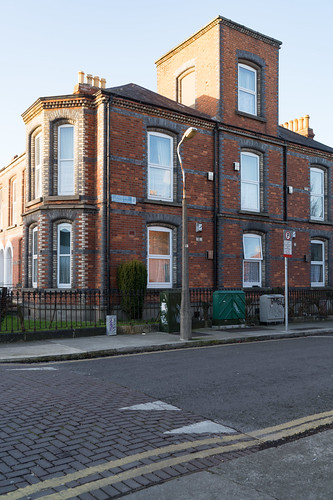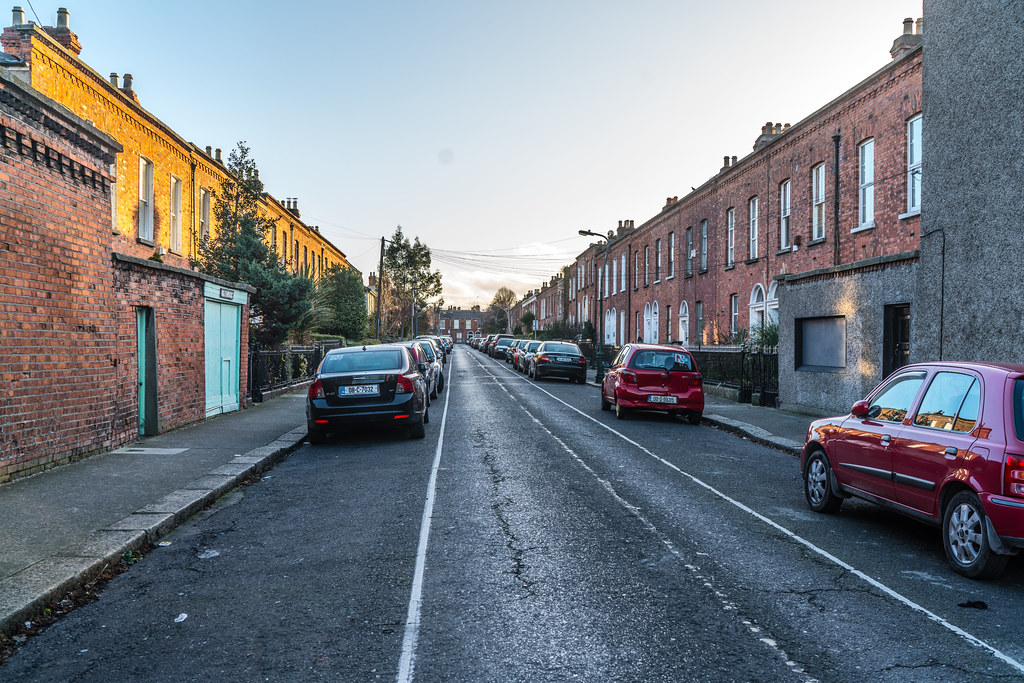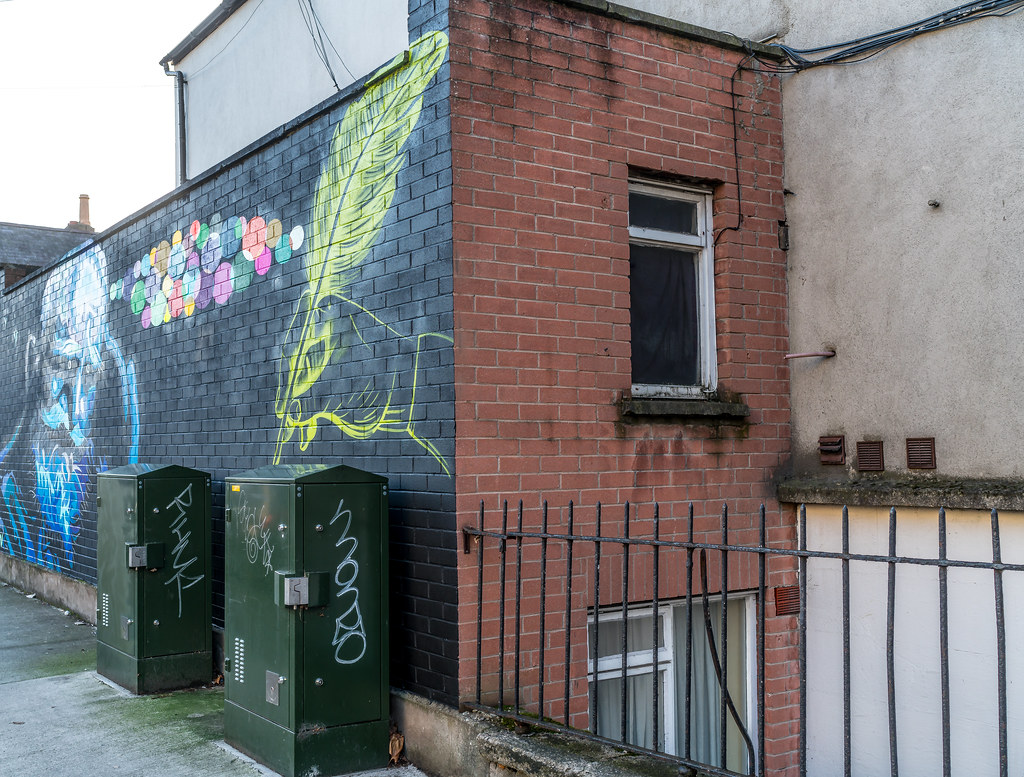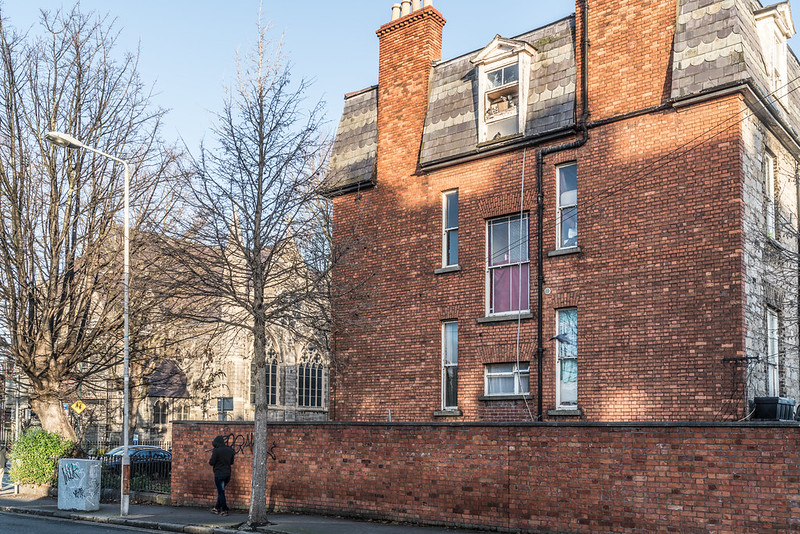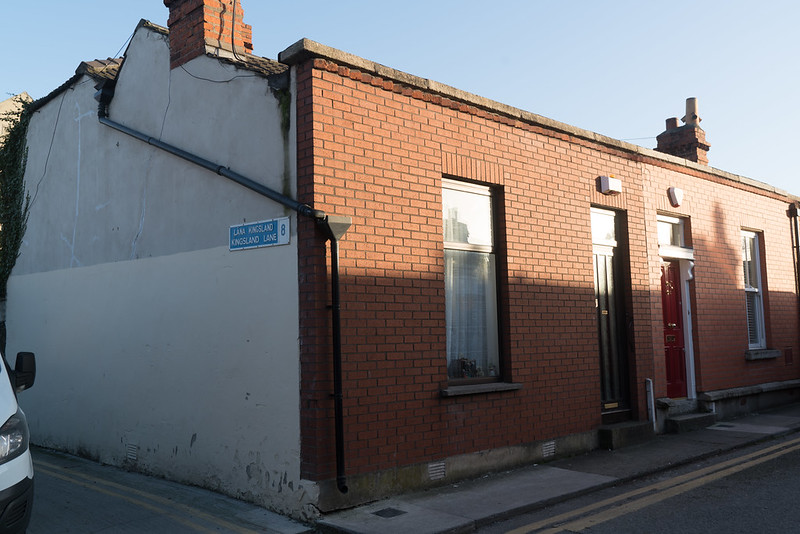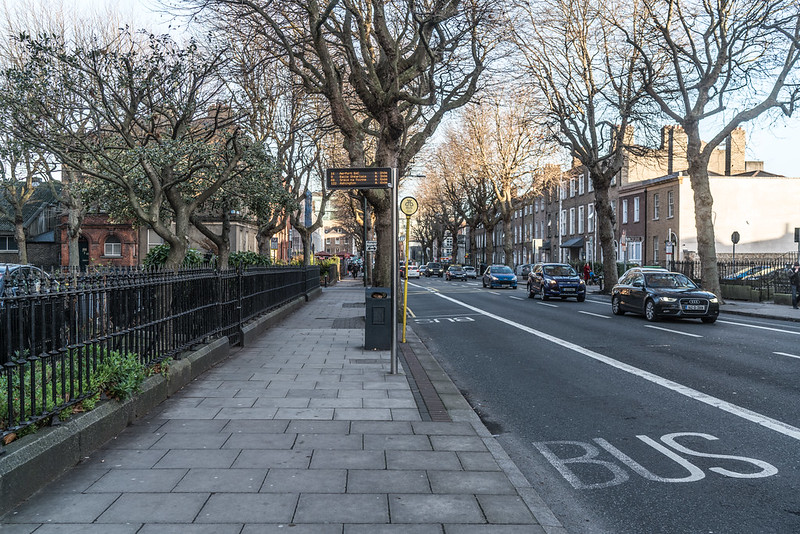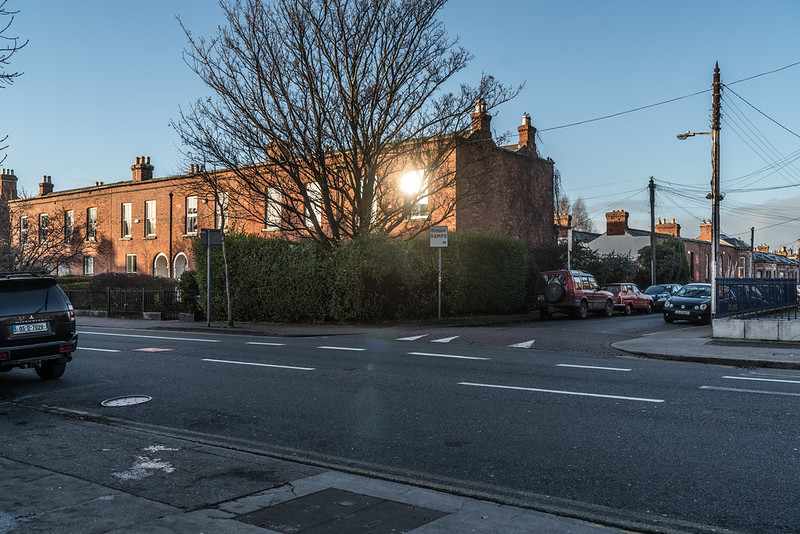THE SOUTH CIRCULAR ROAD PHOTOGRAPHED BY INFOMATIQUE
THE IMAGES BELOW ARE SELECTABLE MENU ITEMS
-

SOUTH CIRCULAR ROAD
-

SOUTH CIRCULAR ROAD
-

SOUTH CIRCULAR ROAD
The South Circular Road is a road in Dublin, Ireland, one of the longest in the city. It runs from Kilmainham in the west of the city, through Rialto and Dolphin's Barn to Portobello, near the centre. As it runs mainly through residential areas, it is used by numerous bus routes.
Until the early 18th century most of the area covered by the road was countryside. The site of Griffith Barracks was originally known as Grimswoods Nurseries. The first buildings on the site were those of a Remand Prison or Bridewell begun in 1813 by the architect Francis Johnston. It was then known as Richmond Gaol and later became Wellington Barracks. Now Griffith Barracks are part of Ireland's largest private college, Griffith College.
Residential development of the South Circular Road began in earnest at Portobello around 1860 when estates such as Emorville and Portabello Garden were put up for sale as development land. It quickly continued along the length of the road into the 1890s.
Harrington Street (St. Kevin's) Catholic church was completed in 1871, and the Church of Ireland St. Kevin's in 1883. The Donore Presbyterian Church (now the Dublin Mosque) was built in 1884 (in the 1860s.
In 1887 Richmond Gaol was transferred to the War Department and became Wellington Barracks.
The Dublin tramways system was extended into the South Circular Road in February 1896 when a line was built from Leonard's Corner to Dolphins Barn. It was electrified in December 1899 and extended to Rialto in May 1905.
The first Jews fleeing conditions in Lithuania (then part of the Russian Empire) arrived in the early 1870s and eventually settled off Lower Clanbrassil Street. In the following decades many of them settled along the South Circular Road, both sides of Leonard's Corner, and in the side-streets off it. There was a Jewish dairy opposite what was then Wellington Barracks.
On July 1, 1943, the South Circular Road was the scene of a robbery by the IRA, then hard-pressed by the Irish Government of Éamon de Valera due to the on-going war. Charlie Kerins, IRA Chief of Staff at the time, and his fellow militants Archie Doyle and Jackie Griffith arrived on bikes at the gates of Player Wills factory on the South Circular Road. With scarves around their faces they stopped at gunpoint the van with some £5,000 for wages, and drove away with the van and the money, which was used to finance the operations.
In 1939 part of the Griffith Barracks was leased to the Irish Amateur Boxing Association as the site for the National Boxing Stadium which was opened by Frank Aiken.
Until the early 18th century most of the area covered by the road was countryside. The site of Griffith Barracks was originally known as Grimswoods Nurseries. The first buildings on the site were those of a Remand Prison or Bridewell begun in 1813 by the architect Francis Johnston. It was then known as Richmond Gaol and later became Wellington Barracks. Now Griffith Barracks are part of Ireland's largest private college, Griffith College.
Residential development of the South Circular Road began in earnest at Portobello around 1860 when estates such as Emorville and Portabello Garden were put up for sale as development land. It quickly continued along the length of the road into the 1890s.
Harrington Street (St. Kevin's) Catholic church was completed in 1871, and the Church of Ireland St. Kevin's in 1883. The Donore Presbyterian Church (now the Dublin Mosque) was built in 1884 (in the 1860s.
In 1887 Richmond Gaol was transferred to the War Department and became Wellington Barracks.
The Dublin tramways system was extended into the South Circular Road in February 1896 when a line was built from Leonard's Corner to Dolphins Barn. It was electrified in December 1899 and extended to Rialto in May 1905.
The first Jews fleeing conditions in Lithuania (then part of the Russian Empire) arrived in the early 1870s and eventually settled off Lower Clanbrassil Street. In the following decades many of them settled along the South Circular Road, both sides of Leonard's Corner, and in the side-streets off it. There was a Jewish dairy opposite what was then Wellington Barracks.
On July 1, 1943, the South Circular Road was the scene of a robbery by the IRA, then hard-pressed by the Irish Government of Éamon de Valera due to the on-going war. Charlie Kerins, IRA Chief of Staff at the time, and his fellow militants Archie Doyle and Jackie Griffith arrived on bikes at the gates of Player Wills factory on the South Circular Road. With scarves around their faces they stopped at gunpoint the van with some £5,000 for wages, and drove away with the van and the money, which was used to finance the operations.
In 1939 part of the Griffith Barracks was leased to the Irish Amateur Boxing Association as the site for the National Boxing Stadium which was opened by Frank Aiken.
You will find links to buy products from Amazon, Google and other partners. If you click on these links, you’ll find that the URL includes a small extra piece of text which identifies that the click came from my websites. This text is an affiliate code, and it means that I get a small percentage of the money you spend if you choose to buy that product, or, in some cases, other products from the site soon after. These affiliate links help pay the costs of producing my websites and ensure that the content is free to you.
COPYRIGHT INFORMATION BELOW APPLIES ONLY TO PHOTOGRAPHS

This work by William Murphy aka Infomatique is licensed under a Creative Commons Attribution-NonCommercial-ShareAlike 4.0 International License.
Permissions beyond the scope of this license may be available at https://excellentstreetimages.com/in-the-year-twentytwenty/copyright/.
